Wound and Scar Healing With Medicinal Essential Oils
Essential oils have a long history of use in natural skin care –These wonderful phytochemicals provide a great breadth of natural medicinal components well-known for healing damaged skin, as well as reducing the appearance of old scars from trauma and surgical wounds, acne and other incidents. Recipes Essential oil blends for these applications are gentle, safe for regular use, and have a wonderful aroma to boot. The blends are easy to make, and simple to customize for your particular needs.
Choosing the Essential Oils
There are a few primary essential oils used in skin care which offer their regenerative properties; these oils can be used in low concentrations, and are generally well-tolerated — certainly more so than many synthetic ingredients. The most important of these may be Helichrysum italicum, also known as Everlasting oil. This wonderful oil is distilled from the daisy-like flowers of the herb. It has a lovely earthy aroma and, despite it’s apparent expense, works in very low concentrations (only a few drops per tablespoon of your total blend). Helichrysum is strongly anti-inflammatory and contains powerful regenerative molecules unique to this oil only.
Helichrysum: The Most Powerful Healer
Helichrysum can be used in a simple carrier oil by itself, though it is considered synergistic with Rosehip seed oil and sometimes with Lavender essential oil. This easy-to-make combination has been noted by professional aromatherapists to “heal wounds with minimal or no scarring” though the nutritive triple unsaturated fatty acids and vitamin A compounds of Rosehip seed, combined with the anti-inflammate and regenerative properties of the Helichrysum. Helichrysum can be a little bit pricey, but it’s wonderful effects have been noted at very low concentrations of the total blend – a little will go a long way. Helichrysum contains natural anti-inflammatory, stress-relieving and regenerative natural constituents that make it an amazing healer all its own.
Lavender to Balance and Sooth
As mentioned above, Lavender is often included in skin care blends – it has gentle anti-inflammatory and tissue regenerative properties, along with very soothing, anti-anxiety aroma. This stress-relieving action seems to be imparted even at the cellular level where wound healing occurs. Lavender essential oil itself began the modern aromatherapy revolution when a scientist burned his hand in a laboratory accident, and after cooling the wound in a beaker of Lavender found the wound to heal remarkably quickly. It is also thought to ‘synergize’ or improve the efficacy of other essential oils in combination.
Sage for Old Scars
The essential oil distilled from the leaves of common Sage is included in blends where the wounds are old – where the healing happened some time ago and has left some unsightly scarring. This can work on keloid scars, acne scars, etc., though application need be regular and should continue for 3 to 6 months. The sage oil is included in essence to break up the scar tissue and to stimulate regeneration with it’s powerful components. Sage oil should be used with great care and in small amounts. While it is called for in formulas for stretch marks, it should only be use after pregnancy, and not during by expectant mothers. Sage is best used for wounds and scars that have already healed to reduce appearance.
Rosemary to Stimulate Cellular Metabolism
Rosemary is an essential oil with a wonderful aroma that is used in many skin care blends. The Verbenone chemotype is called for here as, like Helichrysum and Lavender, contains regenerating ketones (the Cineol type does not). Rosemary will also stimulate cellular metabolism, improving the nutrition and waste cycling of skin cells.
Carotenoid Containing Essential Oils Speed Healing
Other essential oils can offer important nutrients that may speed the healing process. Most importantly, they offer carotenoids and carotenes — natural vitamin-A-like compounds needed for increasing the strength of the healing tissue. Vitamin A is considered absolutely critical to normal skin development, and indispensable during wound healing. Carotenoids are also strong antioxidants, which can ‘mop up’ free radicals at the site of an injury. Two essential oils can be chosen from: Sea Buckthorn and Carrot Root. These are both found as Supercritical Carbon Dioxide extracts with deep colors, indicating the high levels of nutrients.
Antiseptics For Clean Healing
For wounds that are currently healing, a small amount of an antiseptic essential oil can help the process. It can prevent redness and irritation that is the result of your body dealing with bacteria at the sight of the injury. Lavender and Rosemary do have some antiseptic properties, and may be enough if you feel the wound has been well-cleaned. For stronger antiseptic activity, 1-5{fa32f3da1db87532d93af57bebf07259016720c780c92cd8735931dd04d79e41} Tea Tree essential oil can be added to any recipe. The use of the Tea Tree can be discontinued once the wound has sealed completely. If you’re really not fond of the aroma of Tea Tree, Palmarosa essential oil can be used as a more mildly-aromatic substitute.
The Base of Your Formulas: The Carrier Oils
All these oils but Lavender should be diluted in a carrier before use (Lavender CAN be used directly on the skin, but will be used in diluted form in the following blends). Many studies have shown the great efficacy of essential oils at low concentrations – so in Aromatherapy, ‘less is more’ is a general rule. Two highly regarded carrier or ‘base’ oils used for skin treatment are Rosehip seed, cold-pressed from a plant native to the mountain regions of South America, and Hazelnut oil, which is suitable for all skin types. These oils will help the essential oils absorb into the skin, and can provide their own nutritive properties. Rosehip seed contains a wealth of fatty acids, plus a compound similar in action to the pharmaceutical preparation ‘Retin A’. without the drying side effects. Hazelnut oil has mild astringent properties, and will not leave the skin feeling greasy. It is appropriate even for acne prone skin (where Rosehip seed is not!). Other useful healing carrier oils are Tamanu Nut — recently making waves as an excellent carrier for healing nearly all types of skin conditions — and Evening Primrose, which offers nutritive and anti-inflammatory fatty acids.
Putting It Together: The Recipes
So how does one mix these natural botanicals for particular uses? There are a few simple but effective recipes specifically for wound healing and scar reduction. For old keloid or acne scars, make a two-ounce base using equal parts Evening Primrose, Tamanu and Rosehip Seed oils – to this, add one milliliter each of Helichrysum Italicum and Sage officinalis essential oil. Apply regularly for three to six months for best results. For more recent cuts, scrapes, and even surgical incisions (that have reached the point where they are safe to get moist), use the same base recipe, adding one milliliter of Helichrysum and one milliliter of Lavender (Lavendula angustifolia). You can choose whether you’d like to use Rosemary and/or Tea Tree. Apply twice a day while the wound is healing. For the reduction and possible elimination of stretch marks post partum, again to one ounce each of Hazelnut and Rosehip seed oils, add one milliliter Sage and one milliliter Rosemary verbenone. Like the formula for old scars, use this regularly for several months.
This is a summary of a particular aspect of using essential oils for natural health, wellness and beauty. These are effective, tried and true recipes used for their specific, wound healing applications. You can certainly further customize the formulas to suit your needs, or even add additional oils of your liking. With some research, you will find there are wonderful recipes using essential oils for a broad range of skin care applications — they’re very effective, and they’re heavenly to use. As with all aromatherapy use, go slowly, watch for any (rare) skin reactions, and remember that less is more with essential oils – almost all have been noted to work in very low, well tolerated concentrations.
how to use essential oils
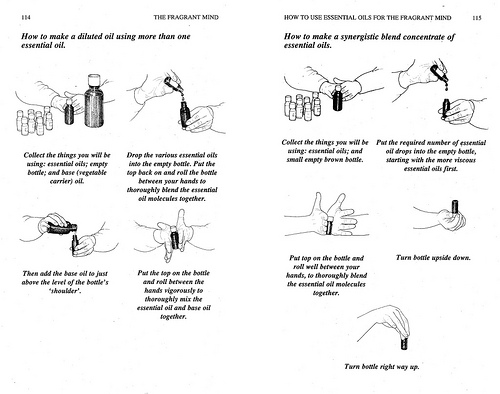
Image by TheFairlyLight
how to use essential oils
Related Essential Oils Articles

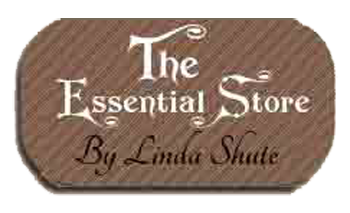


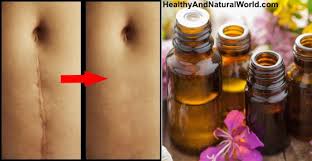

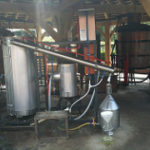
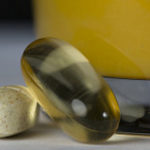


Leave a reply